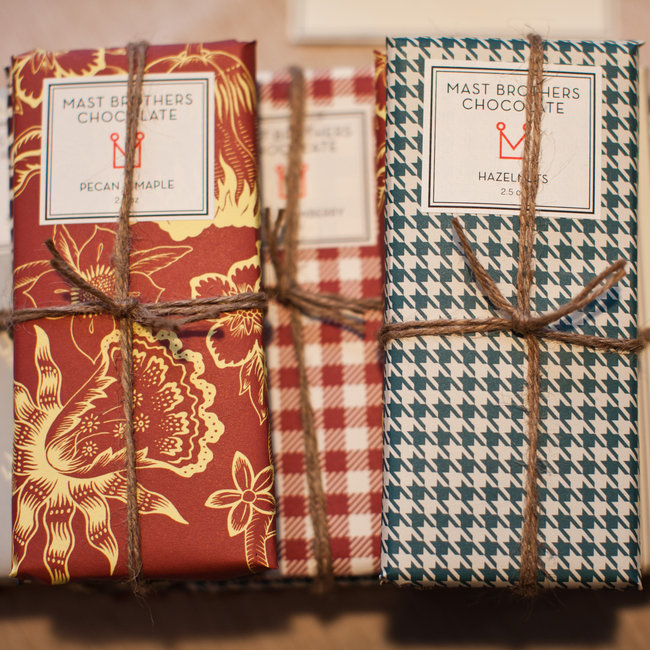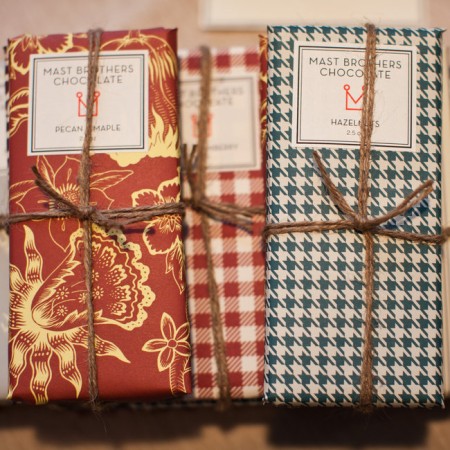24\12\2011
Written by Jurriaan

Chocolate & Beards
Written by Anneloes Bakker
About six years ago, brothers Rick and Michael Mast started making their own chocolate from scratch in their Brooklyn apartment. Initially they were just served at their big dinner parties, but the bars were such a huge succes that the boys decided to turn their hobby into a day job. In 2007 they opened up a tiny shop in Greenpoint, moving to a 2,000-square-foot factory in Williamsburg only two years later. The bars sold in over a hundred stores and restaurants, which were mostly New York-based, with thousands more on the waiting list worldwide! Nowadays the company, which they named Mast Brothers, has been expanded over 3,000 square feet, and Finnish pastry chef Vesa Parviainen was hired to run the new test kitchen.
The Mast Brothers chocolate is handcrafted using single-origin cacao, no unnatural additives or flavorings. The organic cacoa beans are imported directly from the producers in South America and travel to the factory in just 14 days! The beans are transported by schooner into the Brooklyn port. The reason for this: there is nothing local about cacoa. Yet the company could still try to limit their participation in the industrialization of food: the same people who grow the cacao delivered the shipment to the boat. Initially the Brooklyn port was sceptical: the city hadn’t seen a schooner in decades. Eventually they came around, and Mast Brothers became the first to have brought in cargo since 1939.
After the beans have arrived, the men turn them into chocolate in 37 days, using a process no other city chocolatier practices. The beans are roasted on trays in convection ovens instead of drum roasters, and the employees know it is ready by taste. After that the beans are grinded in a machine that was designed and patented by an aerospace engineer friend. The next stop is a chocolate-making machine built by a domestic company, which is powered by granite wheels.
The basic bars of chocolate consist of just cacao beans and organic sugar. Additions, like almonds, come from producers they know personally. The granite wheels of the machines macerate and smooth the roasted beans and sugar for several days. Pressure is increased to make the chocolate more and more smooth. After it’s ready – determined again by tasting – the chocolate sits in metal bins for 30 days to ‘age’, according to a chocolate-making method popularized by chocolate maker Steve DeVries.

The bars are then wrapped, by employees, but also by friends and family who lend a hand in busy seasons. In the beginning, the boys wrapped the chocolate in butcher paper, because they wanted to communicate the message that chocolate is food — not candy. “Our chocolate isn’t really a candy, it’s more like caviar.” Nowadays Mast Brothers have their own paper, every flavour a different print, and the designs are done by the owners, friends and family from the design community.
If you’re interested in the Mast Brothers chocolate and live outside of New York and are not visiting anytime soon: they do ship! The minimum amount of bars to be shipped is 5. The flavours range from sea salt to vanilla, and all the bars contain at least 70% of cacao. Visit their website here.
